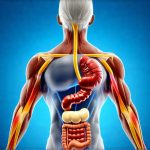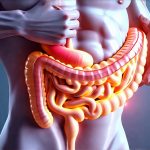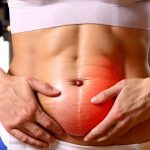Many athletes and active individuals experience unpleasant digestive symptoms during exercise – everything from mild cramping and bloating to debilitating gas and even urgent bathroom breaks. These issues aren’t just about discomfort; they can significantly impact performance, motivation, and enjoyment of physical activity. Often dismissed as a simple consequence of exertion, the root cause frequently lies much deeper: within the complex ecosystem of our gut microbiome. Understanding how gut health influences these experiences is becoming increasingly crucial for optimizing athletic potential and overall well-being. It’s no longer enough to focus solely on training regimes and nutrition plans; we must also address the internal environment that supports—or hinders—optimal digestion and absorption.
The connection between our gut and physical performance is a bidirectional one. What we eat fuels both our bodies and the trillions of microorganisms residing in our digestive tract. In turn, these microbes influence how efficiently we digest food, absorb nutrients, regulate inflammation, and even impact mental function, all factors that directly affect athletic capacity. When this delicate balance is disrupted – by diet, stress, antibiotics, or other factors – it can manifest as frustrating digestive issues during exercise. This article will explore the intricate relationship between gut health, cramping, gas, and general digestive discomfort experienced while active, offering insights into how to mitigate these problems and support a healthier, more comfortable athletic experience.
The Gut Microbiome & Exercise-Induced Digestive Distress
The human gut is home to an astonishingly diverse community of microorganisms – bacteria, fungi, viruses, and archaea – collectively known as the gut microbiome. This ecosystem plays a vital role in numerous physiological processes beyond simply digesting food. It’s involved in immune function, neurotransmitter production (influencing mood and even cognitive performance), and nutrient synthesis. During exercise, several factors can disrupt this delicate balance within the gut. Increased heart rate and blood flow are diverted away from the digestive system towards working muscles, reducing the efficiency of digestion and absorption. This, combined with the physical jostling associated with many forms of exercise, creates a stressful environment for the microbiome.
Furthermore, intense or prolonged exercise can temporarily increase intestinal permeability – often referred to as “leaky gut.” This means the barrier between the digestive tract and the bloodstream becomes more porous, allowing undigested food particles, bacterial toxins, and other substances to enter the circulation. This triggers an inflammatory response, which can contribute to bloating, cramping, and general discomfort. The composition of your microbiome also plays a role; a less diverse gut microbiome is often associated with greater susceptibility to these issues. Individuals with lower microbial diversity may experience more pronounced digestive symptoms compared to those with a robust and balanced gut ecosystem.
Finally, the types of foods consumed before, during, and after exercise significantly impact gut health and subsequent digestive comfort. Highly processed foods, excessive sugar intake, and insufficient fiber can all negatively affect the microbiome, leading to increased gas production, bloating, and cramping. Conversely, diets rich in whole foods, fruits, vegetables, and fermented foods promote a healthy microbiome and improve digestive resilience during physical activity. Understanding gut inflammation is also key to managing these issues.
Dietary Strategies for Gut Support During Exercise
Optimizing your diet is one of the most effective ways to support gut health and minimize exercise-induced digestive discomfort. Here’s how:
- Prioritize Fiber: Incorporate adequate fiber from sources like fruits, vegetables, whole grains, and legumes. Fiber feeds beneficial gut bacteria, promoting a diverse and resilient microbiome. However, increase fiber intake gradually to avoid exacerbating bloating or gas initially.
- Embrace Fermented Foods: Include fermented foods such as yogurt (with live cultures), kefir, sauerkraut, kimchi, and kombucha in your diet. These foods contain probiotics – live microorganisms that can help repopulate the gut with beneficial bacteria.
- Limit Processed Foods & Sugar: Minimize consumption of processed foods, refined sugars, artificial sweeteners, and excessive fat. These ingredients can disrupt the microbiome and contribute to inflammation.
- Hydrate Appropriately: Staying adequately hydrated is crucial for digestive health. Drink water consistently throughout the day, especially before, during, and after exercise. Dehydration can worsen constipation and bloating. Considering dental health is also important for proper digestion.
Managing Pre-Exercise Nutrition & Timing
What you eat before exercise significantly impacts your gut’s ability to cope with the demands of physical activity.
– Avoid large meals within 2-3 hours of exercising. This gives your digestive system time to process food before exertion begins.
– Choose easily digestible carbohydrates as your primary pre-exercise fuel source, such as bananas, oatmeal, or rice cakes. These are less likely to cause bloating or cramping than high-fat or high-fiber foods.
– Experiment with different pre-exercise snacks and meals to determine what works best for your gut. Everyone responds differently.
– Consider the timing of carbohydrate intake relative to your exercise intensity. Higher intensity workouts may benefit from more readily available carbohydrates consumed closer to activity time, while lower intensity activities can tolerate longer digestion periods. Ensuring good gut transit time will also help with pre-exercise nutrition.
The Role of Low FODMAP Diets & Gut-Targeted Supplements
For individuals with particularly sensitive digestive systems, a low-FODMAP diet may be helpful. FODMAPs (Fermentable Oligosaccharides, Disaccharides, Monosaccharides and Polyols) are certain types of carbohydrates that can be poorly absorbed in the small intestine, leading to fermentation by gut bacteria and subsequent gas production and bloating. While not intended as a long-term solution, temporarily reducing FODMAP intake can identify trigger foods and alleviate symptoms. Consult with a registered dietitian before undertaking a low-FODMAP diet, as it is restrictive and requires careful planning.
Gut-targeted supplements – such as probiotics, prebiotics (which feed beneficial bacteria), and digestive enzymes – may also offer support for individuals experiencing exercise-induced digestive issues. However, the effectiveness of these supplements varies greatly depending on individual needs and microbiome composition. It’s essential to choose high-quality supplements from reputable brands and consult with a healthcare professional before starting any new supplement regimen. Remember that supplements are meant to complement—not replace—a healthy diet and lifestyle. Also, consider condiments and sauces as potential triggers for discomfort. And don’t underestimate the importance of improving posture to aid digestion. Finally, understanding how gut health influences skin issues can help you address the root cause of discomfort.
The key takeaway is that supporting gut health isn’t just about avoiding digestive discomfort during exercise; it’s about optimizing your overall athletic performance and well-being. By understanding the complex interplay between your gut microbiome, diet, and physical activity, you can take proactive steps to minimize symptoms, enhance nutrient absorption, reduce inflammation, and unlock your full potential. cookware and cooking methods also play a role in optimizing gut health.


















